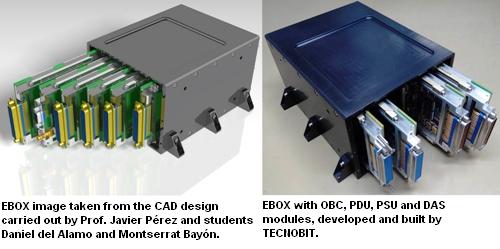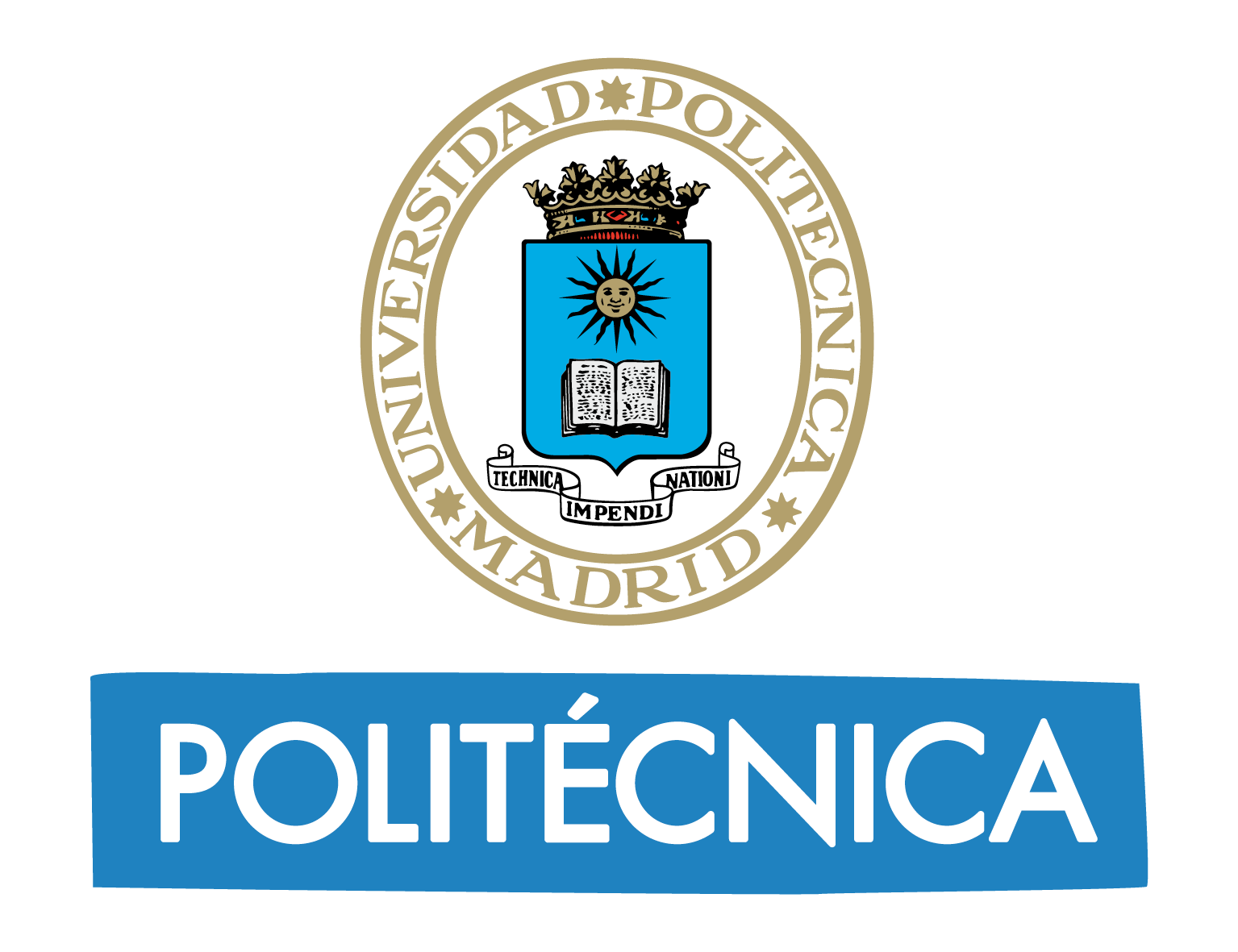The electronics box of the UPMSat-2 is designed by UPM and TECNOBIT
The Instituto Universitario de Microgravedad Ignacio da Riva has performed the mechanical, thermal and structural design of the UPM microsatellite electronics box (EBOX).
The microsatellite on board computer (OBC) is the element in charge of control and sequencing of the tasks to be performed during the mission. These tasks involve the procedures needed to carry out the essential activities (attitude control processes, battery change control, transmission and reception of date …) and the activation of the payloads at the programmed instants.
The UPMSat-2 is a university class satellite, designed, built and operated by a team of the Instituto Universitario de Microgravedad Ignacio da Riva (IDR), students and professors of the Escuela Técnica Superior de Ingeniería Aeronáutica y del Espacio (ETSIAE) and the research group “Sistemas de Tiempo Real y Arquitectura de Servicios Telemáticos” (STRAST) of the Universidad Politécnica de Madrid (UPM).
The UPM Sat-2 OBC is integrated in a card of the EBOX. The design of the EBOX has been performed as a joint task of IDR/UPM, leaded by professor Javier Pérez with collaboration of a student, Daniel del Alamo, and the TECNOBIT team, Eloy Sánchez, Francisco Javier Coello and Alejandro Granda. TECNOBIT is a relevant Spanish electronic engineering firm.
Joint Technology Challenge
IDR has been in charge of the mechanical, thermal and structural design of EBOX. The box frame, which contains the electronics cards with the computer, and power and data management systems, connected through a backplane, has been designed complying with ANSI VITA 48.2 standard, which defines the mechanical and thermal specifications for microcomputers. The design of this element has strongly depended on the number and dimensions of the cards to be mounted in the box, and on the volume available inside the spacecraft structure. Other requirements considered were the mass/volume ratio optimization, and flexibility of the final design to allow a future use in different defense and space missions.

Daniel del Alamo and Montserrat Bayón, UPM students, have contributed to the mechanical and thermal analysis and design of EBOX, supported by the IDR/UPM collaboration and fellowship programs. “My collaboration in the EBOX design has been very valuable to me, both professionally and personally. Not only due to the opportunity to work in a complex engineering project, but also for having the opportunity to realize the extreme importance of the information flux that exists between all the teams involved in the project to achieve a successful result”, Daniel del Alamo said.
Concerning TECNOBIT, leader electronic engineering firm, integrated in Oesia Group (an international consulting company specialized in technology) this project “is a good opportunity to cooperate with UPM in a key sector as is aerospace”, Eloy Sánchez, TECNOBIT project manager, said.
Participation from TECNOBIT was also a challenge, due to the difficult trade-off to be reached among cost, reliability and lifetime in a hard environment as that of space. TECNOBIT modules have been designed for the two year UPM Sat-2 mission. The whole project has been planned under a modular concept that allows a maximum flexibility with a view to future use.
In addition to the electric design, TECNOBIT has been in charge of the development of the following modules:
- OBC (On Board Computer). It is in charge of running the software that executes the management tasks of the satellite subsystems: attitude control, communications with the ground station and between satellite subsystems.
- PSU (Power Supply Unit). This module provides power to the satellite subsystems, taken fron solar panels, which are built joining SPVS-5 modules (made up of Azur Space solar cells), and a Li-ion battery from Saft. This card generates stabilized lines (+3.3 V, +5 V, ±15 V) for the satellite equipment (magnetometers, magnetorquers, computer, etc.).
- PDU (Power Distribution Unit). This module is in charge of switching on (and off) and protects the different loads.
- DAS (Data Acquisition System). This module measures the output of the different sensor outputs in the satellite equipment (temperatures, magnetic field, bus voltage and currents) which gives information on satellite status.
UPMSat-2, the following step
At present the two EBOX units already built are in the testing phase, checking the hardware and software functionality, in parallel in TECNOBIT and in Escuela Técnica Superior de Ingenieros Informáticos of UPM, by the STRAST team, leaded by professor Juan Zamorano.
In addition to this work, Javier Piqueras and Marian González, students of MUSE (Master Universitario en Sistemas Espaciales), are checking the EBOX pin-out connection with the satellite equipment (solar panels, battery, magnetometers, magnetorquers, payloads, temperature sensors, etc. The integration of EBOX in the satellite will start before summer.


